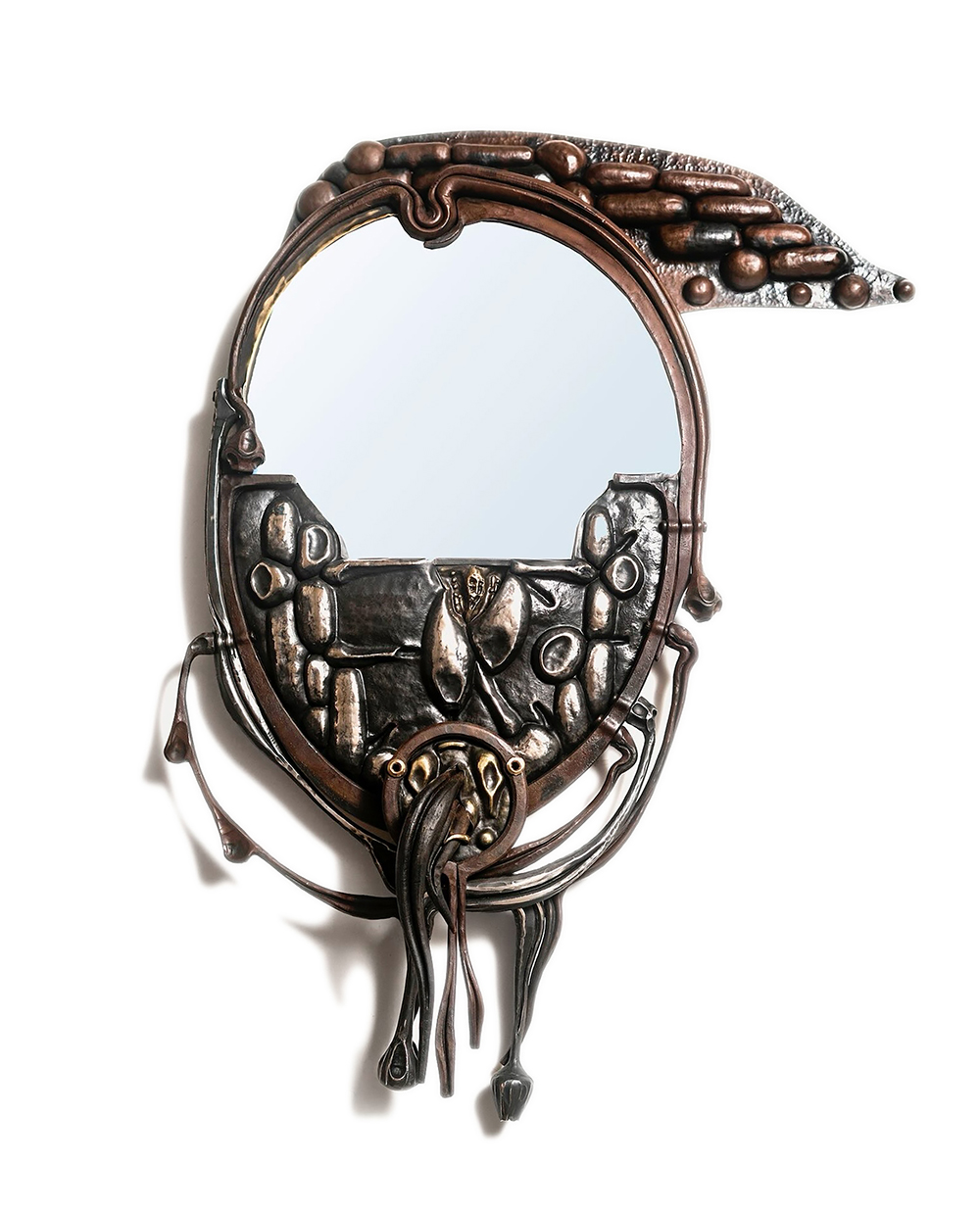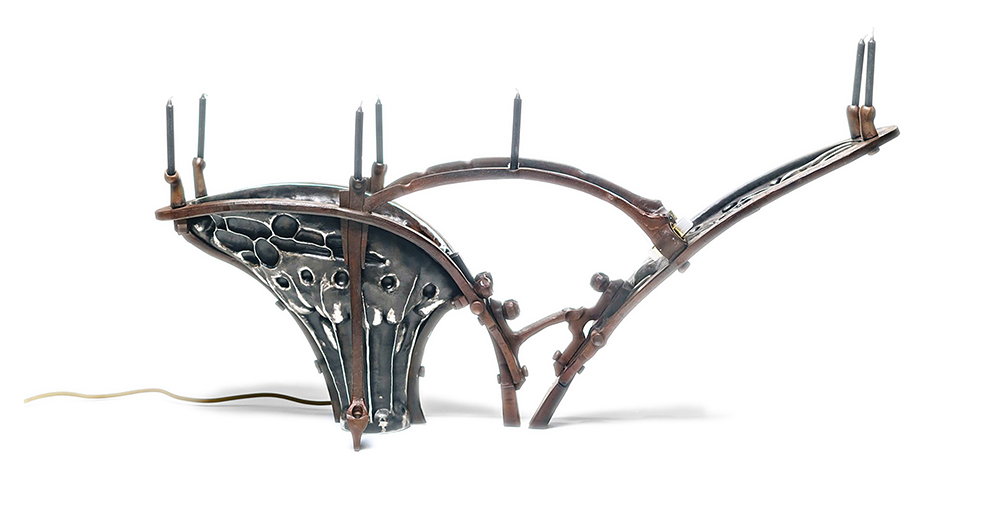Molded from mud, the golem is brought to life with ritual incantations of the Hebrew alphabet, its purpose to protect, but even with instructions placed on its tongue, the golem inevitably goes amok, twisting those intentions and bringing disaster upon those who called for it. From this Jewish parable, Rachel David gathers, “You can only rely on your community. You can’t offset your responsibilities.”
David, an Asheville-based blacksmith, turned to this story for inspiration in conceptualizing her exhibition, “Engorging Eden,” on display at the Metal Museum. “I started thinking about different parables that could be translated to working with what I’m worried about in this country and in this world,” she said in her artist talk at the opening reception for the show on February 16th. “I think that’s a really pertinent thing to remember as we are experiencing really scary things — that we are each other’s saviors. That’s something that I want to be very explicit about in all of my work.”
David primarily works in furniture, a familiar form that in itself evokes community. “We live with furniture,” David said. “And it’s conversational. … These are forms that tell stories and hold their own narratives but also are part of our narrative.”
For David, her pieces reflect our relationship with the Earth and with one another. The furniture seems to bubble with pustules and pits, a mix of metals melting off the surfaces in slivers. Each bulbous facet David shaped using a different support system. “Really all of this is planned,” David said. “Like, it has to fit; it has to work. But part of my interest is in the distortion that you can achieve in hot forming metal.”
The distortion, David said, reminds her of natural erosion formations. In her Savage Horizon Jewelry Cabinet, she pointed out, “They also look like cobblestones, which also are like city-building blocks, and I think with these really aggressive clawing shapes and then these phallic drippings, this is climate change, and this is what extractive capitalism has done to this world. Where we are in the mountains, there was a hurricane, and everything is insane.”
Indeed, many of the pieces in this show were created in the aftermath of Hurricane Helene. “This piece is very much responsive to the hurricane and all of the landslides,” she said of the jewelry cabinet. “There’s 500-plus hours in this piece.”
“When we’re talking about erosion, there are a lot of implications in that word: erosion of trust, erosion of the Earth, erosion of values, and then where does that leave us?”
That’s where David expects viewers to involve themselves — literally — through reflections and refractions of the metals and selenites brought about in their shine. Mirrors, too, offer this reminder. In Family Tree, where representational ancestors and the suns and moons fill a gallery wall with circular shapes, a central mirror piece reminds us that “we are responsible for what we put in[to the world].”

Abstract tongues also roll out of these ancestral creatures, and many of David’s other pieces. “The tongue is like the idea of communication [which] has always been a big part of my work [as an activist and artist],” she said. “That’s part of my responsibility as a member of this community: to be responsible to my ancestors and to the future.”
In keeping with this responsibility, as part of her practice, David sources more than 85 percent of her metal from Asheville scrapyards. Further, she, along with Lisa Geertsen and Anne Bujold, co-founded the Society of Inclusive Blacksmiths. “We foster having diversity in blacksmithing.”
David’s commitment to community is furthered in swallowed ice (table lamp), which was part of her “Pollination” series — “like a pollination of ideas when we come together and we inspire each other.” The lamp features a light bulb in the center with candles affixed to a suspending bridge-like form. “They’re reflecting each other, and they’re also holding each other … always bringing in the light.”
The symbolism in the lamp is apparent: “I’m cynical and I’m dark, but I also feel a lot of obligations to my community to be proactive and contributive. I make work sometimes [because] I have to remind myself to get out. Get out!”
“Engorging Eden” will be on display at the Metal Museum through May 11th. The exhibit is a part of the museum’s Tributaries series.
